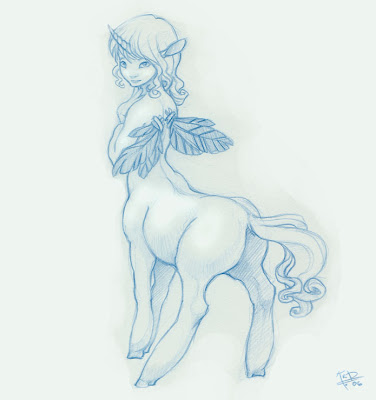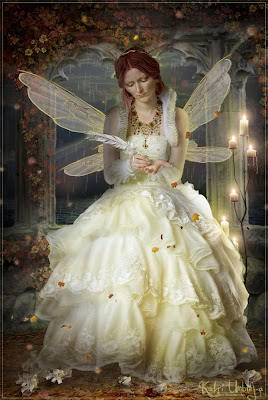When you hear that some writers can hit 10,000 words a day, not just once or twice, but regularly, there are two responses you could have.
1. Hate them.
Throwing a pity party for yourself that you just weren’t born with as much talent, luck, time or black magic as they were also goes here. Excuses, envy, disbelief.
None of these responses will help you.
What response will help you?
2. Learn from them.
So I’ve gathered the best How To Write 10,000 words a day here to read and study and emulate.
Top billing goes to Rachel Aaron. This woman is my hero. (Her novels are great too.) If you haven’t read her blog post How To Write 10,000 Words, you should. Here’s the heart:
Side 1: Knowledge, or Know What You’re Writing Before You Write It
… If you want to write faster, the first step is to know what you’re writing before you write it. I’m not even talking about macro plot stuff, I mean working out the back and forth exchanges of an argument between characters, blocking out fights, writing up fast descriptions. Writing this stuff out in words you actually want other people to read, especially if you’re making everything up as you go along, takes FOREVER. It’s horribly inefficient and when you get yourself in a dead end, you end up trashing hundreds, sometimes thousands of words to get out. But jotting it down on a pad? Takes no time at all. If the scene you’re sketching out starts to go the wrong way, you see it immedeatly, and all you have to do is cross out the parts that went sour and start again at the beginning. That’s it. No words lost, no time wasted. It was god damn beautiful….
Side 2: Time
…those days where I only got one hour to write I never managed more than five hundred words in that hour. By contrast, those days I got five hours of solid writing I was clearing close to 1500 words an hour. The numbers were clear: the longer I wrote, the faster I wrote (and I believe the better I wrote, certainly the writing got easier the longer I went). This corresponding rise of wordcount and writing hours only worked up to a point, though. There was a definite words per hour drop off around hour 7 when I was simply too brain fried to go on. But these numbers are very personal, the point I’m trying to make is that by recording my progress every day I had the data I needed to start optimizing my daily writing….
Side 3: Enthusiasm
…Every day, while I was writing out my little description of what I was going to write for the knowledge component of the triangle, I would play the scene through in my mind and try to get excited about it. I’d look for all the cool little hooks, the parts that interested me most, and focus on those since they were obviously what made the scene cool. If I couldn’t find anything to get excited over, then I would change the scene, or get rid of it entirely. I decided then and there that, no matter how useful a scene might be for my plot, boring scenes had no place in my novels.
Read the whole thing. It’s worth it. She also has a number of other great articles on her blog.
Notice the importance of a detailed outline — almost a prewritten draft. I think this is incredibly important in making that word count on a consistent basis. Now, not all writers agree. The Pantser champion on this topic is probably Den Asaan, author of the Haanta Series, who gives advice like, “Do not hinder your characters.” “Rewrite.” And there’s the rub–just going with the flow doesn’t always work, and even when it does, it seems to me this method is going to involve a LOT of rewriting. I know, because I’ve tried it. Still, she makes several good points and it’s worth reading her post.
Luc Reid — author of The Writing Engine, a free book on how to motivate yourself to write — also has words of wisdom to impart. He breaks it down into 7 keys:
1. Don’t expect the result to be publishable unless you have a lot of experience writing.
2. Be a fast typist.
3. Clear your schedule; remove all distractions
4. Have all the ingredients you personally need to drive the story forward.
5. Don’t revise yet.
6. Have a vision.
7. Immerse yourself in the story.
Again, read the whole thing. His blog has a wealth of good advice for writers.
Finally, another favorite inspiration to me is an Oldie But Goodie. Michael Morcock, creator of Elric, and Lester Dent, the author of Doc Savage pulp adventure dime store novels, explain how to pump that story oil like a Texas tycoon. Their advice is so old they not only refer to trad publishers, but to typewriters. It’s solid advice nonetheless.
Lester Dent Master Plot Formula teaches you formula fiction from start to finish. Don’t let those literary snobs who sneer at the word “formula” scare you off. Everyone uses a formula. Some just use weird, ineffective formulas, and others use kick-ass formulas that result in books readers love. If you like to piss off readers (and that seems to be the point of a lot of “literary” fiction) then use the piss-off readers formula. If you like to please readers, use Lester Dent. Michael Morcock has this to add:
1. First of all, it’s vital to have everything prepared. Whilst you will be actually writing the thing in three days, you’ll need a day or two of set-up first. If it’s not all set up, you’ll fail. Model the basic plot on the Maltese Falcon (or the Holy Grail — the Quest theme, basically). In the Falcon, a lot of people are after the same thing, the Black Bird. In the Mort D’Arthur, again a lot of people are after the same thing, the Holy Grail. It’s the same formula for westerns, too. Everyone’s after the same thing. The gold of El Dorado. Whatever.
2. The formula depends on the sense of a human being up against superhuman force — politics, Big Business, supernatural evil, &c. The hero is fallible, and doesn’t want to be mixed up with the forces. He’s always about to walk out when something grabs him and involves him on a personal level.
3. You’ll need to make lists of things you’ll use. Prepare an event for every four pages. Do a list of coherent images. So you think, right, Stormbringer: swords, shields, horns, and so on.
4. Prepare a complete structure. Not a plot, exactly, but a structure where the demands were clear. Know what narrative problems you have to solve at every point. Write solutions at white heat, through inspiration: really, it can just be looking around the room, looking at ordinary objects, and turning them into what you need. A mirror can become a mirror that absorbs the souls of the damned.
5. Prepare a list of images that are purely fantastic, deliberate paradoxes say, that fit within the sort of thing you’re writing. The City of Screaming Statues, things like that. You just write a list of them so you’ve got them there when you need them. Again, they have to cohere, have the right resonances, one with the other. The imagery comes before the action, because the action’s actually unimportant. An object to be obtained — limited time to obtain it. It’s easily developed, once you work the structure out.
6. Time is the important element in any action adventure story. In fact, you get the action and adventure out of the element of time. It’s a classic formula: “We’ve only got six days to save the world!” Immediately you’ve set the reader up with a structure: there are only six days, then five, then four and finally, in the classic formula anyway, there’s only 26 seconds to save the world! Will they make it in time?
7. The whole reason you plan everything beforehand is so that when you hit a snag, a desperate moment, you’ve actually got something there on your desk that tells you what to do.
8. Once you’ve started, you keep it rolling. You can’t afford to have anything stop it. Unplug the phone and the internet, lock everyone out of the house.
9. You start off with a mystery. Every time you reveal a bit of it, you have to do something else to increase it. A good detective story will have the same thing. “My God, so that’s why Lady Carruthers’s butler Jenkins was peering at the keyhole that evening. But where was Mrs. Jenkins?”
10. In your lists, in the imagery and so on, there will be mysteries that you haven’t explained to yourself. The point is, you put in the mystery, it doesn’t matter what it is. It may not be the great truth that you’re going to reveal at the end of the book. You just think, I’ll put this in here because I might need it later. You can’t put in loads of boring exposition about something you have no idea of yourself.
11. Divide your total 60,000 words into four sections, 15,000 words apiece. Divide each into six chapters. You can scale this up or down as you like, of course, but you’ll need more days — and stamina — for longer books, and keep chapters at 2.5k max. In section one the hero will say, “There’s no way I can save the world in six days unless I start by…” Getting the first object of power, or reaching the mystic place, or finding the right sidekick, or whatever. That gives you an immediate goal, and an immediate time element, as well as an overriding time demand. With each section divided into six chapters, each chapter must then contain something which will move the action forward and contribute to that immediate goal.
12. Very often a chapter is something like: attack of the bandits — defeat of the bandits. Nothing particularly complex, but it’s another way you can achieve recognition: by making the structure of a chapter a miniature of the overall structure of the book, so everything feels coherent. The more you’re dealing with incoherence, with chaos — ie with speed — the more you need to underpin everything with simple logic and basic forms that will keep everything tight. Otherwise the thing just starts to spread out into muddle and abstraction.
Read the whole thing.
Now, did you notice something? A lot of these super writers mention the same points over and over. Especially these three points:
1. Plan the story ahead of time, including not only the plot twists, but crucial details like sensory descriptions and exotic names. This planning phase must SEPARATE and PRIOR to the writing sessions.
2. Give yourself a long period to write so you can get into the flow and keep going.
3. Lock out all distractions, including any form of communication (internet, phone, social media, relatives, spouses and offspring) so you can immerse yourself in your story.
My own notes on how to prepare scene outlines ahead of time can be found here: Scene Helper.






